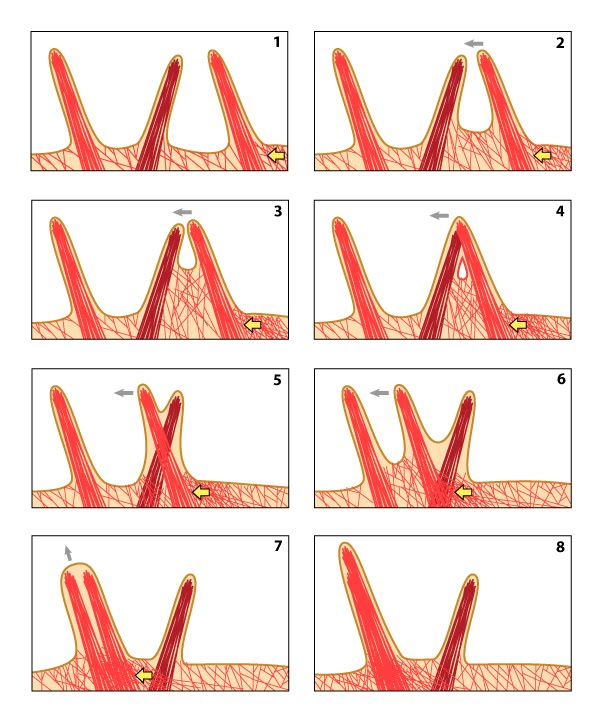Steps in Formation 1. Initiation 2. Extension 3. Lateral movement and Stasis 4. Adherence 5. Pulling 6. Retraction and Collapse Functional Modules
| Filopodia
|
References
- Small JV. Lamellipodia architecture: actin filament turnover and the lateral flow of actin filaments during motility. Semin. Cell Biol. 1994; 5(3):157-63. [PMID: 7919229]
- Oldenbourg R., Katoh K. & Danuser G. Mechanism of lateral movement of filopodia and radial actin bundles across neuronal growth cones. Biophys. J. 2000; 78(3):1176-82. [PMID: 10692307]
- Steketee MB. & Tosney KW. Three functionally distinct adhesions in filopodia: shaft adhesions control lamellar extension. J. Neurosci. 2002; 22(18):8071-83. [PMID: 12223561]
- Steketee M., Balazovich K. & Tosney KW. Filopodial initiation and a novel filament-organizing center, the focal ring. Mol. Biol. Cell 2001; 12(8):2378-95. [PMID: 11514623]
- Mitchison T. & Kirschner M. Cytoskeletal dynamics and nerve growth. Neuron 1988; 1(9):761-72. [PMID: 3078414]

